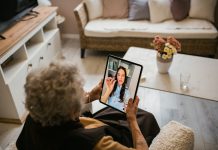Katrina Delargy, Managing Director, Tiyga Health explores the importance of pacing yourself when recovering from COVID-19, particularly for those suffering from long COVID
A weekend may not be long enough to recharge our batteries. Maybe even a holiday will not be enough to switch off, wind down and recover. This is even more true if you are recovering from COVID-19, as many are. There are believed to be 1.3 million people in the U.K. with long COVID.
Pacing yourself means going at the right speed at the right time, to achieve the desired outcome. If you go too slowly, you will not achieve the goal but going too quickly too soon is equally likely to result in failure.
What is pacing?
Pacing is a term used by elite athletes. We hear about pacing in prestige competitions – where a pacemaker role is often used in training and in races. Formula 1 races have a pace car when the racing must accommodate certain constraints, for example, a dangerous surface or an accident that narrows the track. Football managers deploy substitutes when someone is slowing, they need players who can deliver the right result. If people are exhausted, they need to review the activity.
To achieve any challenging goal, deliver your best and avoid burnout – you need to have the energy to complete the task. Pacing yourself means doing whatever the task or activity is at a rate that your mind and body can cope with, staying within your current limits
Who needs to pace themselves?
We all need to pace ourselves when we are trying to achieve something that is at or close to the limits of our current personal capacity. Those who are constrained by age or illness must pace themselves more, but those who are ambitious or unaware of their limitations must surely discover the value of pacing.
We all have limits to the amount of mental and physical energy we can expend at any time, it may be concentration or mental focus of attention or physical effort. We must live within our energy envelope. Sometimes the consequences of over-stepping that limit can be especially detrimental – e.g., in post-exertional malaise, severely delayed reaction to cognitive/physical effort can occur.
Everyone should learn to pace themselves. When the boundaries of work and leisure are blurred, these limits may be exceeded, batteries are drained and need topping up. Working or travelling long hours to our job in a digitally connected world, can take us to our limits.
When we are young and healthy many of us burn the candle at both ends. Sadly, sometimes the warning signs are not heeded, but nervous or physical exhaustion can be hard to repair.
This is even more true for those suffering chronic illness, the limits on mental and physical effort are often breached with severe consequences that are irreversible. This can be even harder when there is a time lag or delayed effect – when going over the limit has a disproportionate effect that is only known when it is too late. This can result in months off work, and loss of income.
Long COVID
For people suffering from long COVID, pacing yourself is often the only answer as the medical and research professions are still trying to discover which treatments work safely enough to be incorporated into patient pathways. People are returning to work and often struggle to explain long COVID to their employers because the symptoms can often be invisible. They fear not being believed. Role adjustment may be needed to allow them to pace their activity better.
We asked long COVID patients “What advice do you wish you were given after you first knew your COVID symptoms were lasting longer than expected?”. Almost all said rest and most people specifically mentioned pacing.
“Pacing is key even on a good day. Take time for yourself daily and don’t overdo it. I recommend you get physio and strengthening exercises and get support from close friends or family. Sometimes it’s very lonely so be in touch with a few people and maybe one or two groups with people who are going through the same as you.”
Managing time and energy
What does a day look like with pacing? This is hard to imagine, but TIYGA has developed an app to support pacing whether this is for fit and healthy people or those with a long-term illness, such as chronic pain or long COVID. This figure shows an example of a paced day for someone recovering from long covid. You can see different colours representing 15 min intervals, here you can see that cognitive activity (red) is done in short bursts with other activities of daily living (yellow), meditation (turquoise), gentle stretches (orange) in between. Sleeping (green) is important and relaxing with minimal physical or cognitive load, such as watching TV (royal blue), dominate their day. Pacing is well established for energy management when people have M.E. (myalgic encephalomyelitis, chronic fatigue syndrome) and others with limited capacity to work. Pacing can help people to work part-time remotely, it can help people to retain employment and enable employers to retain vital skills and knowledge. Whether you are an athlete, an employee, a parent, or a patient it is vital to manage your mental and physical energy and pace yourself to balance your roles and goals. Time Is Your Greatest Asset, you only have one life, manage your time to protect your health.
Please note: this is a commercial profile
© 2019. This work is licensed under CC-BY-NC-ND.











